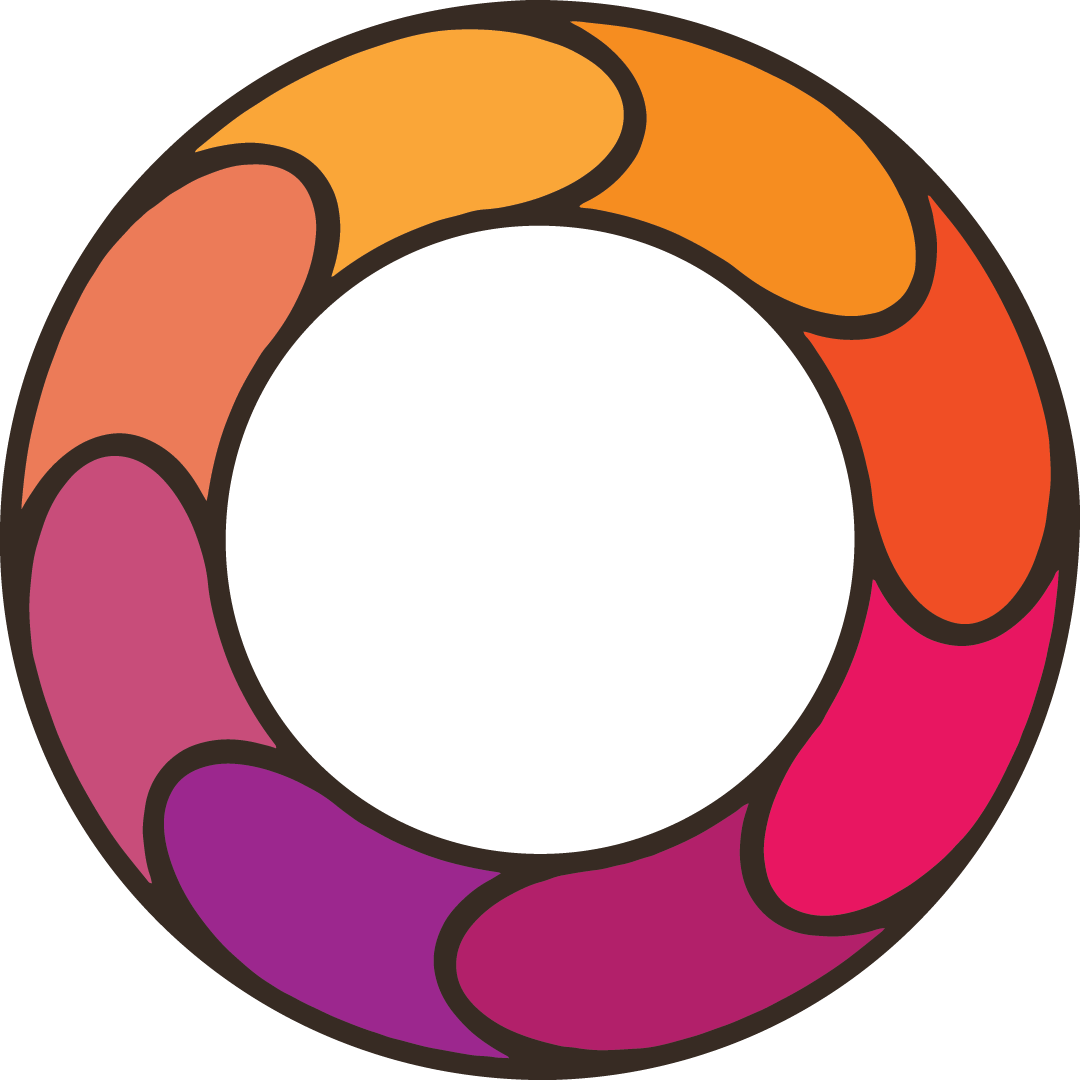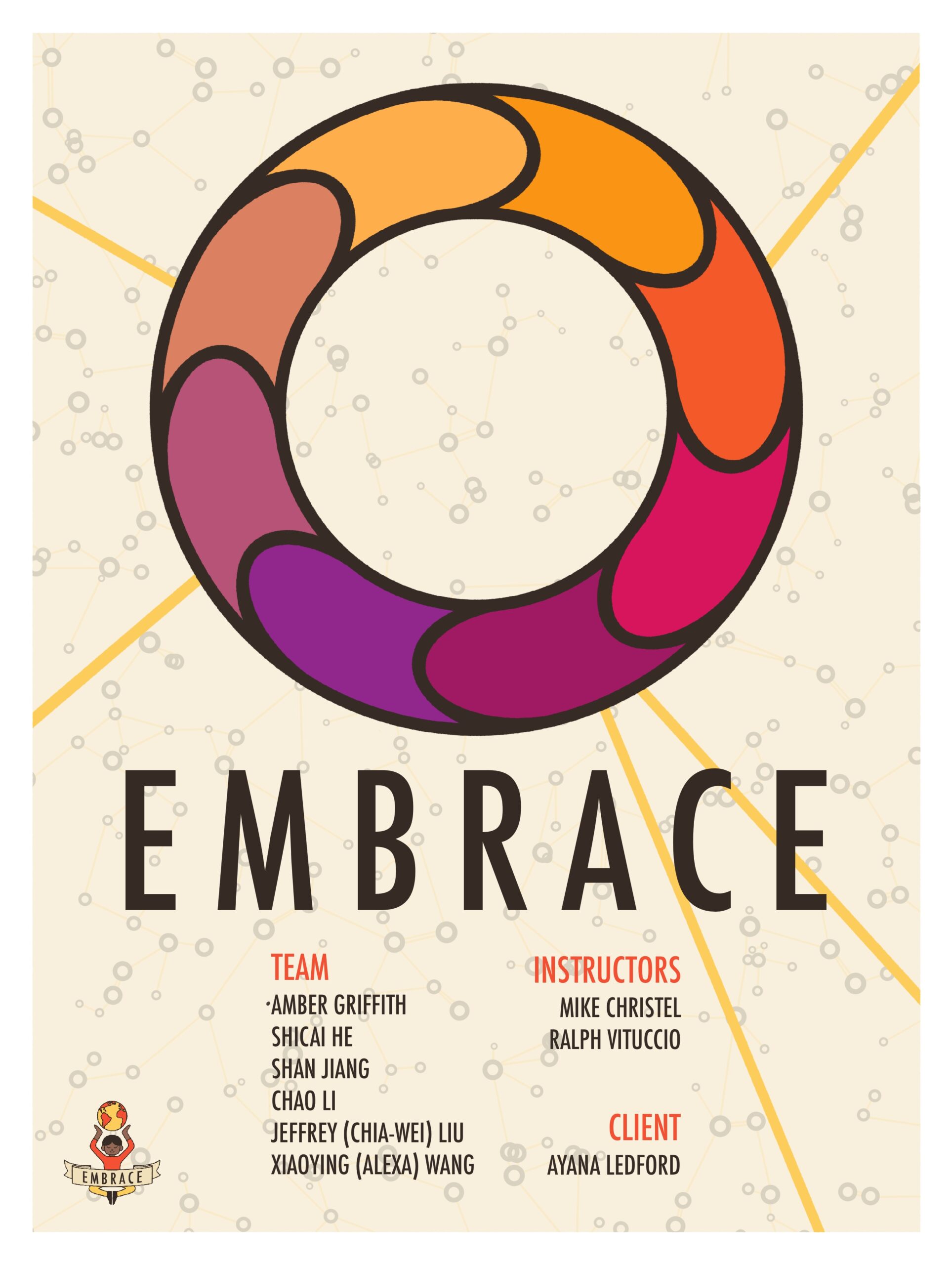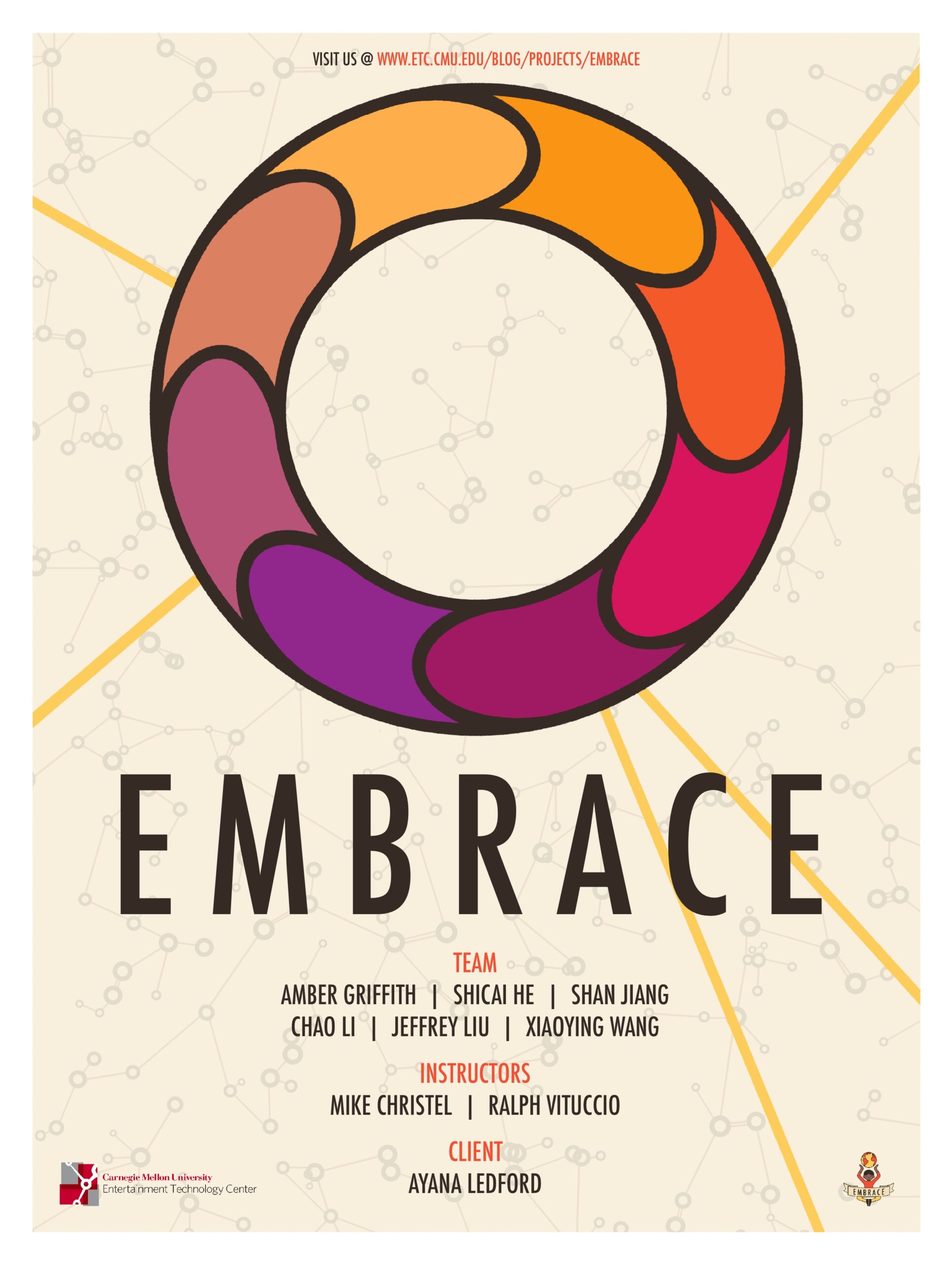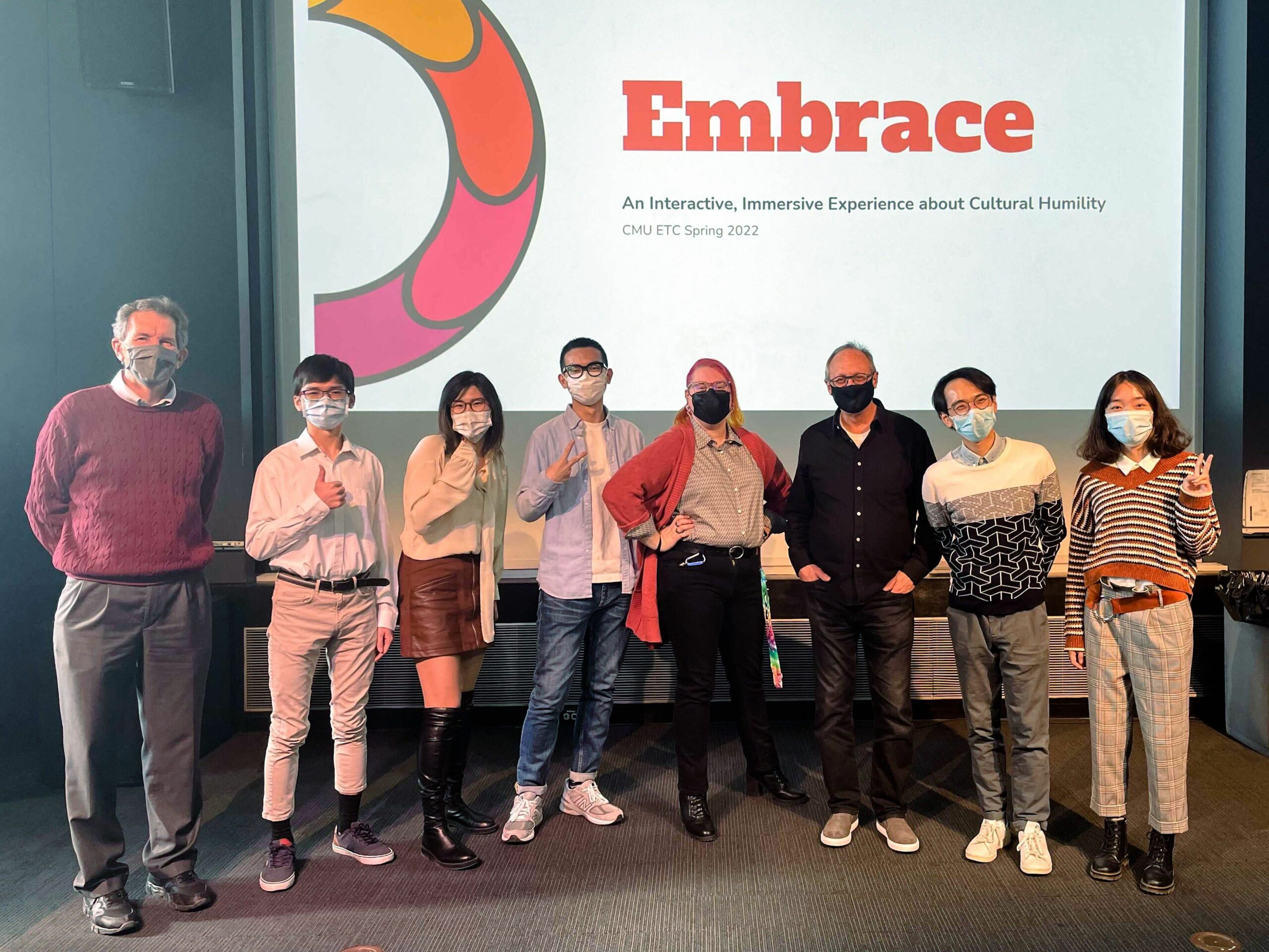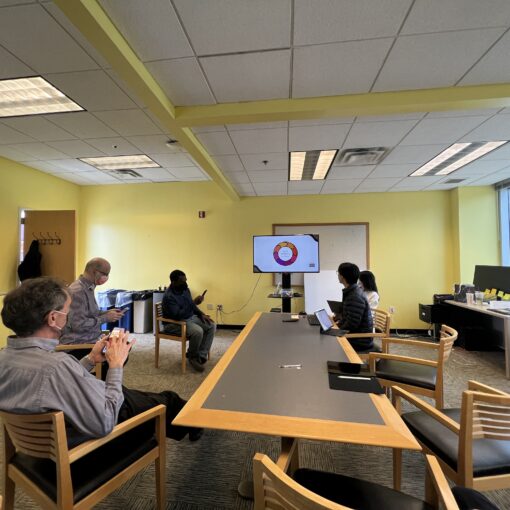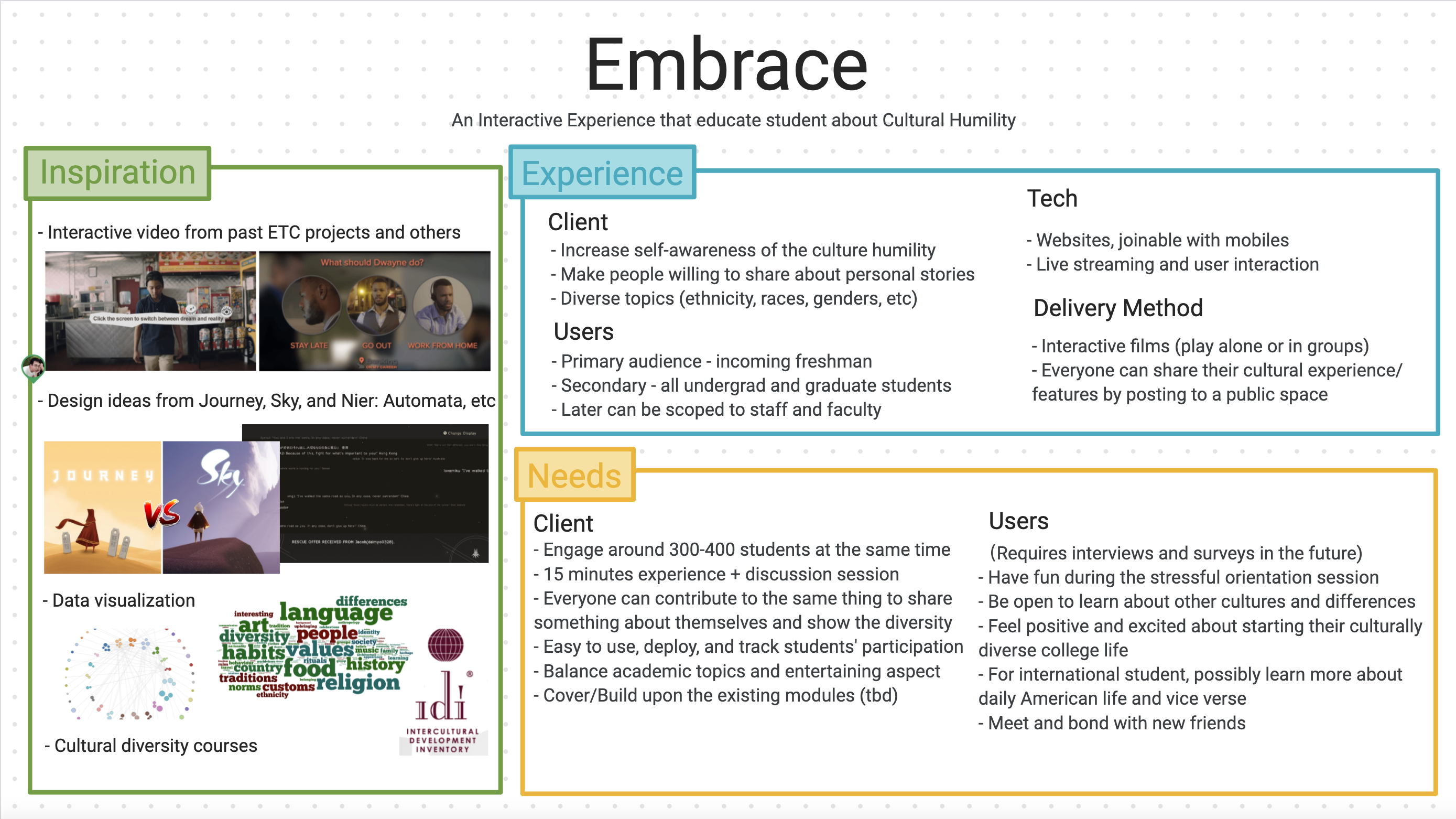Summary:
This week (Feb.7-13) was the second week into pre-production, where game design was reviewed and iterated two more times. More tools in project management, including an AnonymityBot, were utilized in Slack to create a safer space for the team. Production design and preliminary survey were both coming to a final conclusion and would be finalized by the end of the next week. A demo from AirConsole was made to show the connection between phones and the big monitor. A play-test plan was drafted to prepare for the future sessions.
What we have done:
Client Meeting (Feb.7)
During the weekend, our game design ideas No.2 and No.3 were iterated with more visual explanations and presented to our client the following Monday. Idea No.1 was no longer being considered because of over-scoping and limited play time to prepare and create a culture system. Compared to 1, we agreed that 2 and 3 were achievable within 14 weeks and playable within a 15 minute timeframe. On that note, screenshots of the refined designs are attached below.
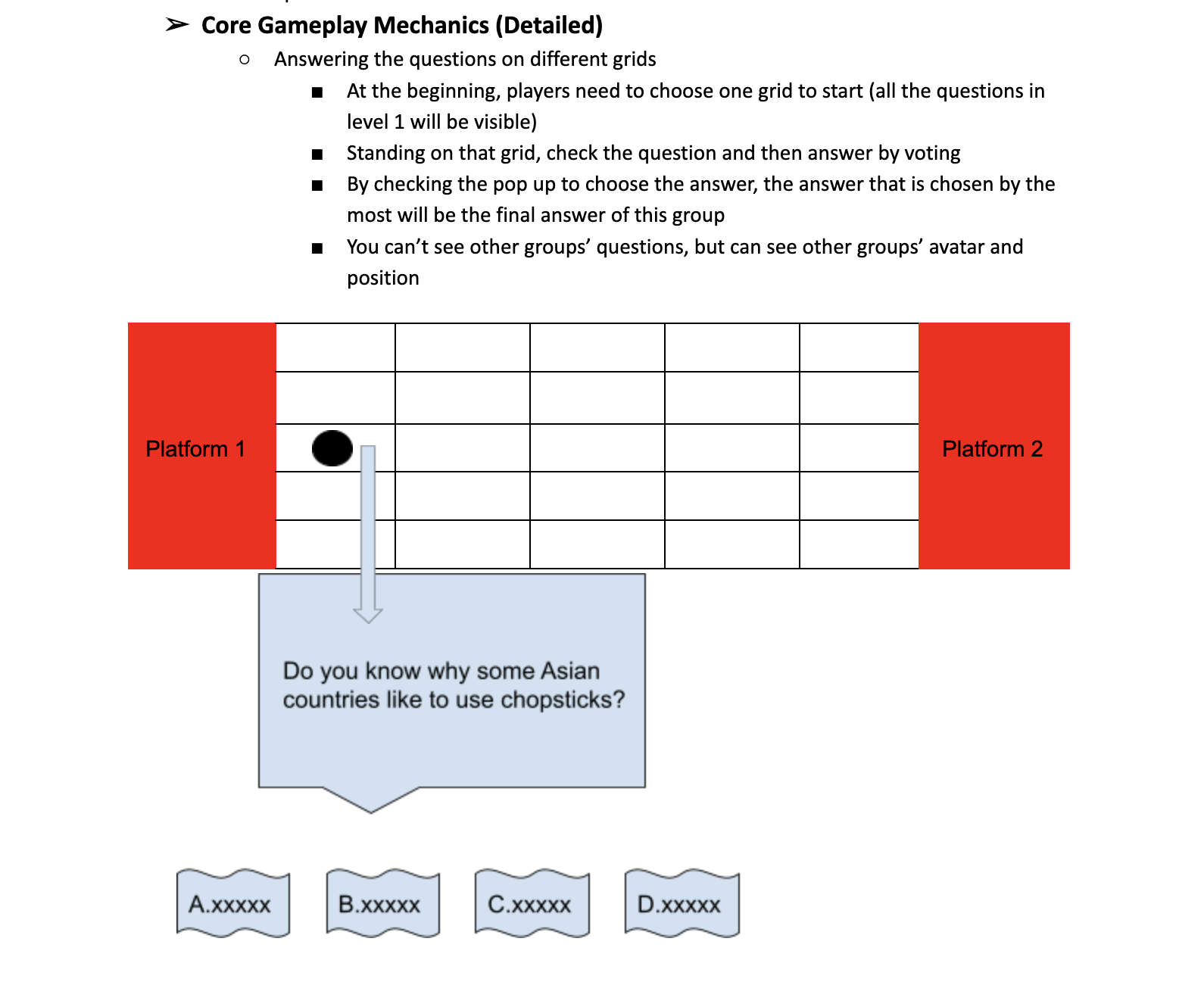
Idea 2 (refined) 
Idea 2 (refined) 
Idea 3 (refined)
After the presentation, our client expressed that since idea 2 involves more collaboration and learning about different cultures, it is more about the concept of cultural competency than cultural humility. For idea 3, she liked the basic mechanism where players could reflect on their cultures. Although players could find people who shared similar traits, she pointed out that the outliers could feel more isolated after the gameplay.
We also had another iteration of the preliminary survey that we planned to send out to students to have a better understanding of the diversity, inclusion, and equity(screenshot attached). Some of the questions were phrased from “Do you feel comfortable learning about different cultures?” to “Do you feel uncomfortable learning about certain cultures?”, based on our instructors’ feedback last week, to see if we could get more “honest” answers than a general “Yes – comfortable”.
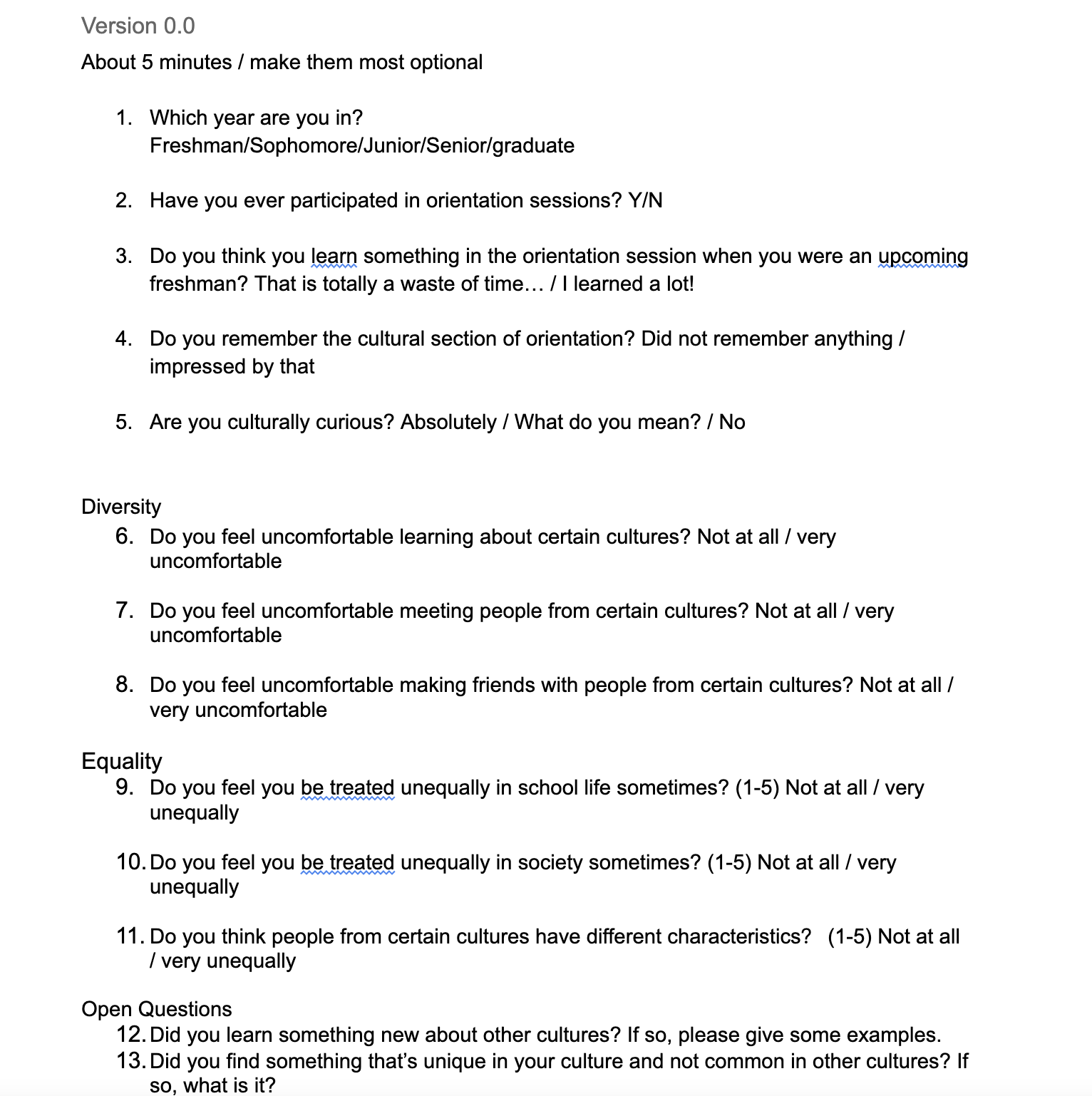
However, such phrasing was strongly discouraged by our client because it might hold people back from filling it out. The length of the survey was too long and the survey was also not shown to help with the project development right now. Some of the example questions our client gave included:
- Do you think you know about cultural humility? If not, here’s a definition.
- Do you find that you are given opportunities to learn about other cultures as a student in CMU?
- Do you have interest in exploring other cultures if opportunities are provided to you?
- Do you feel as a first-year student you are presented with an understanding of how your culture plays a role in your ability to connect with other students?
D3 Lab Meeting (Feb.9)
Our pre-production has been mid-way through but still we needed to put in more effort to iterate through to get a clear picture of what we should be creating for the next 3 months. Thanks to our client, we had a chance to present to the D3 Lab on Feb.9 to gather more feedback within a full hour. D3 Lab, in full, is the Data-Driven Diversity Lab from CMU, where our client is one of their partners and collaborators. The mission of D3 Lab is to “use data to understand and improve how different groups experience student success, thriving, and sense of belonging at Carnegie Mellon University” and one of their goals is to “identify and understand the experiences of students from a diverse set of backgrounds on campus and analyze existing institutional data to identify areas for improvement”. We believed that with their professional experiences, they could help us realize more pros and cons of the current game designs and where we could focus on in the future.
To prepare for the meeting, we created another set of presentation slides with information from the ¼ walkaround presentation last week plus a more well-rounded and merged game design(slides attached).

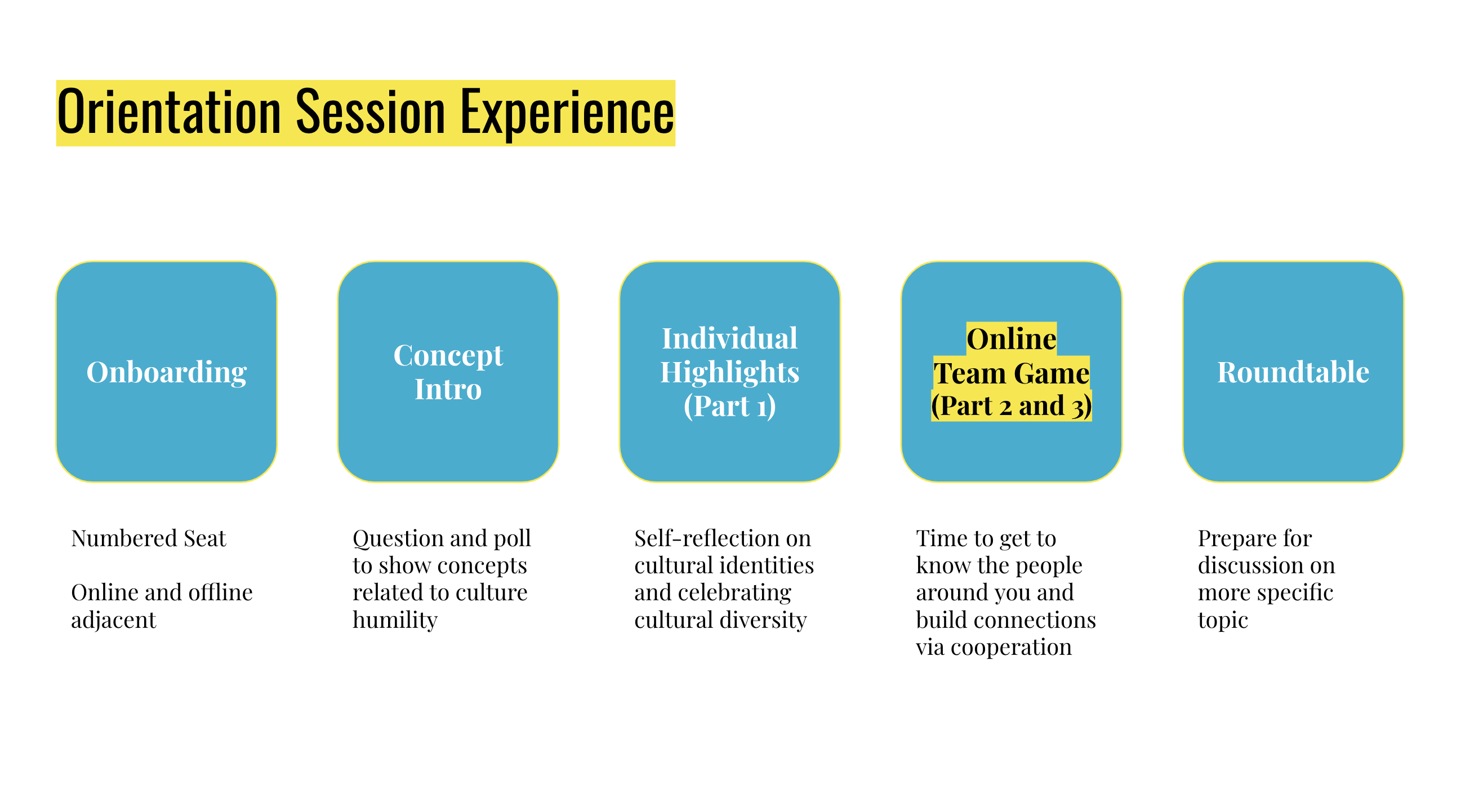

Game Design Presentation – Part 1 
Game Design Presentation – Part 2 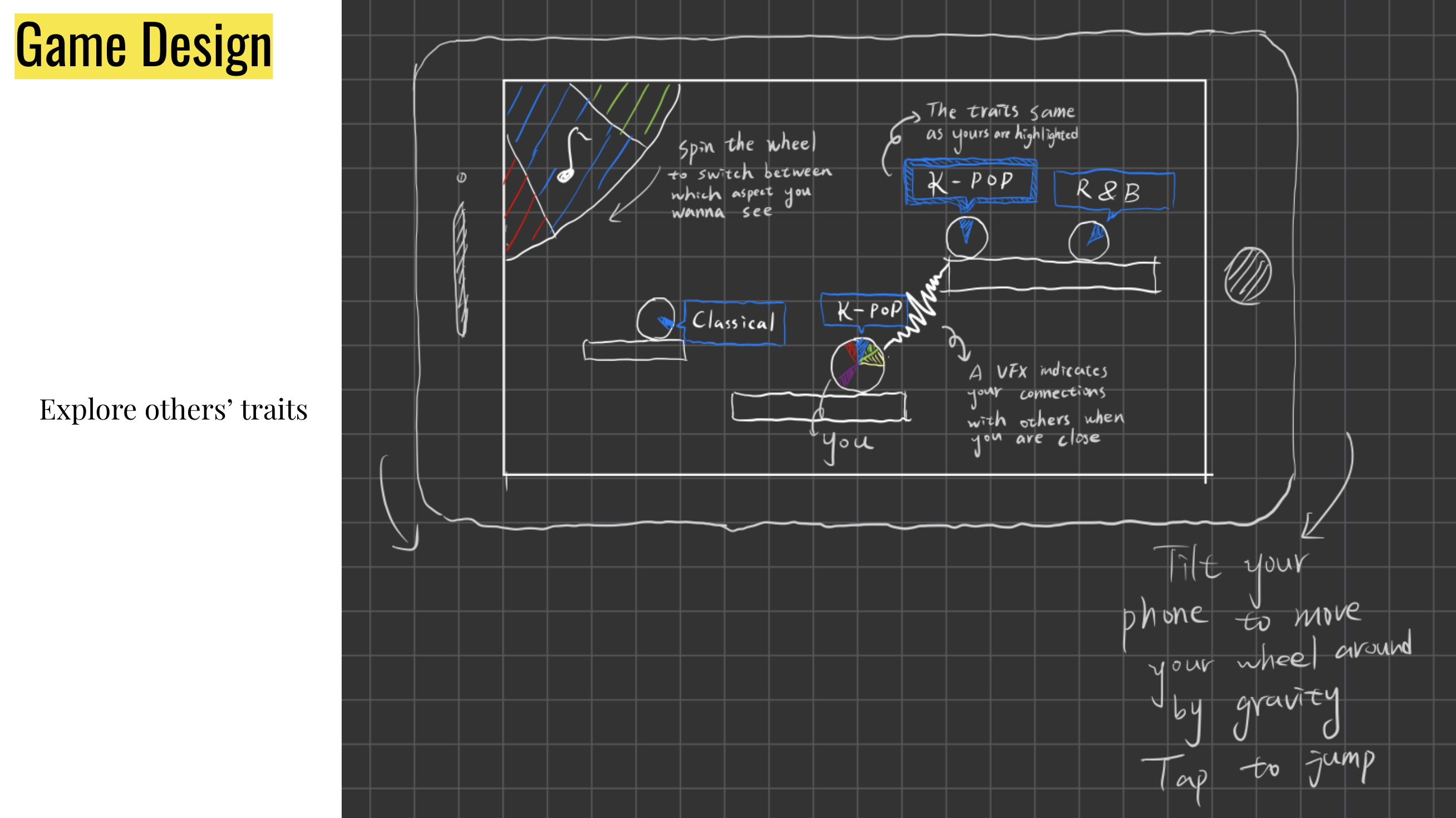
Game Design Presentation – Part 2 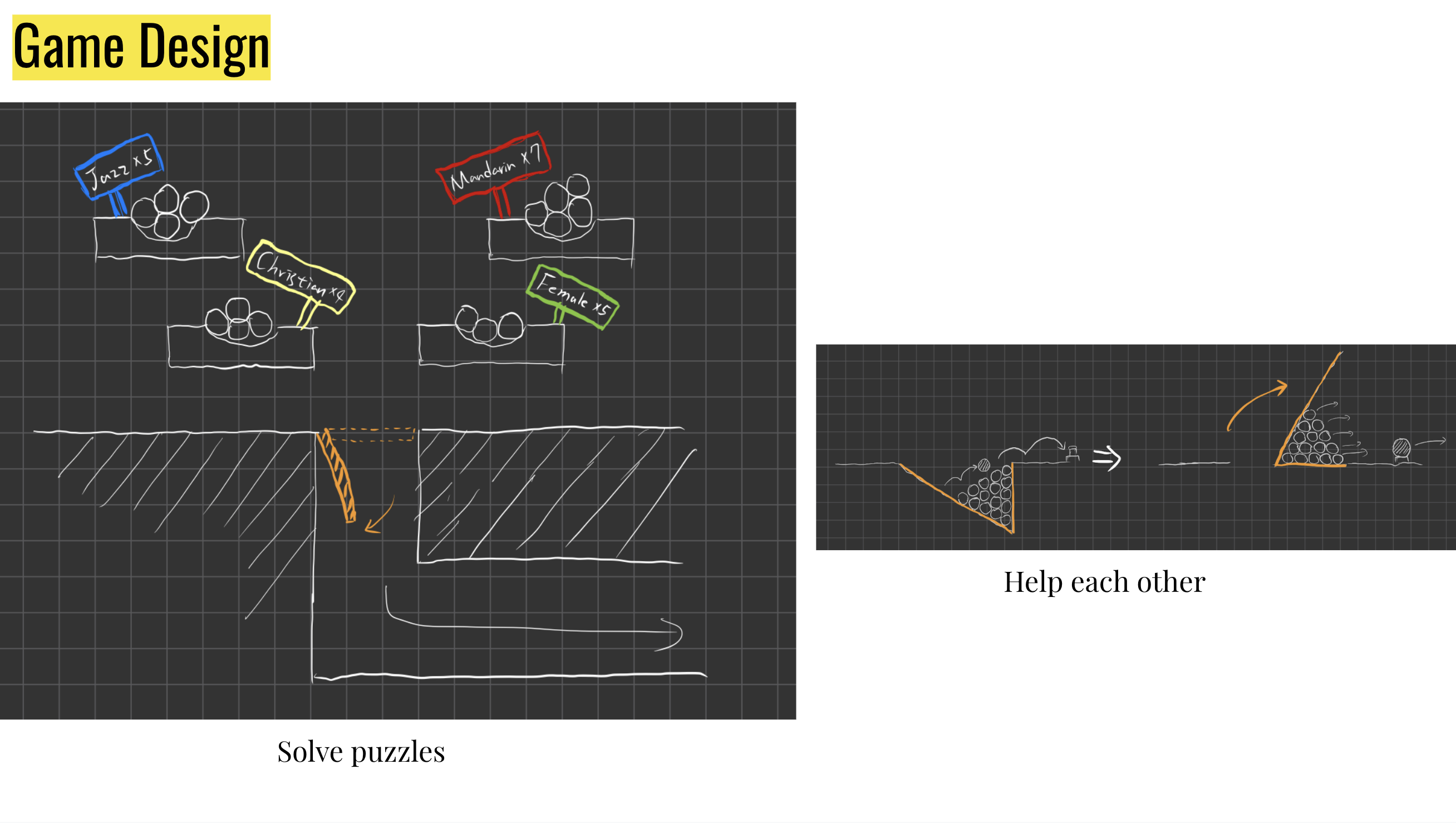
Game Design Presentation – Part 2 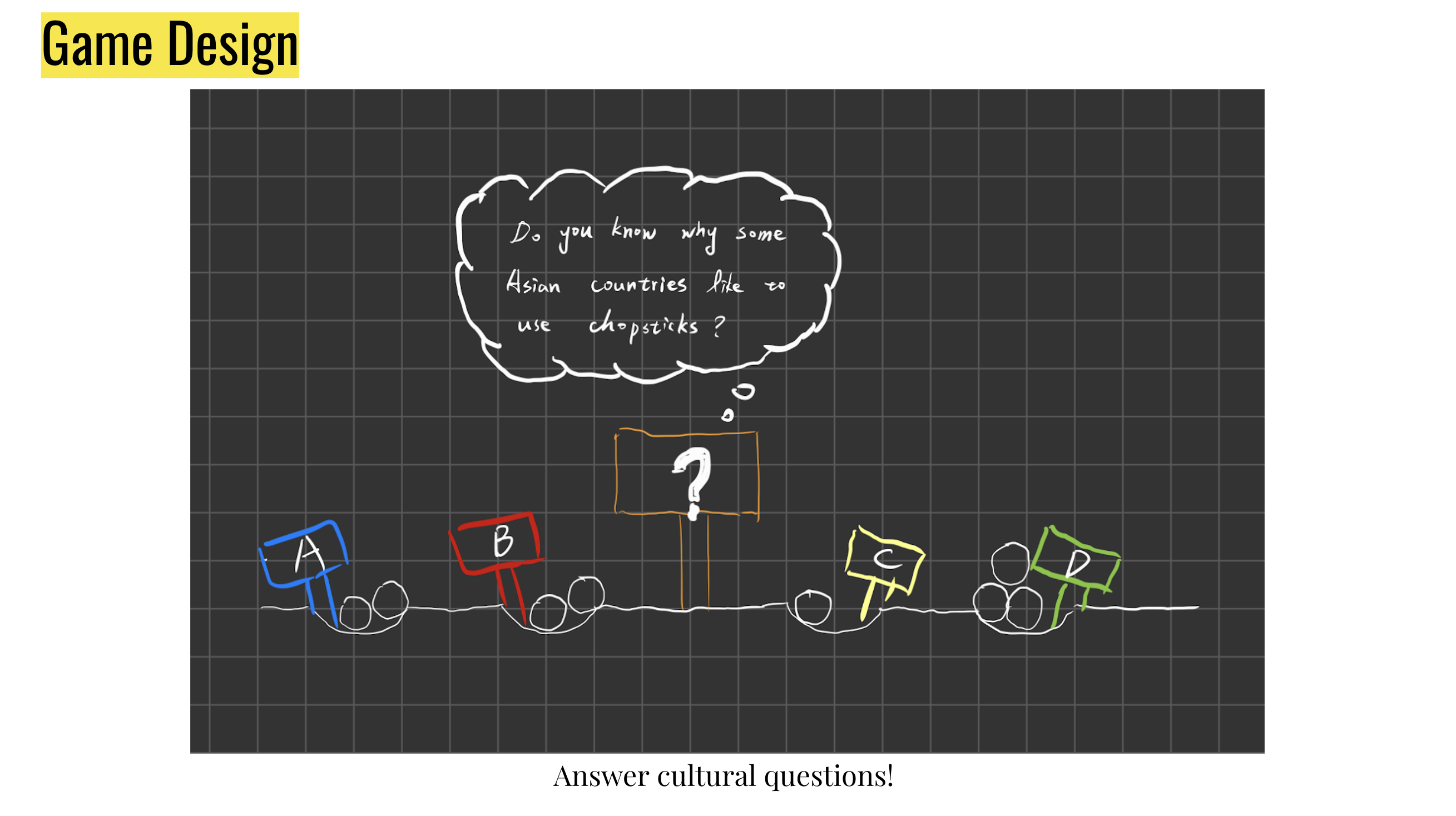
Game Design Presentation – Part 2 
Game Design Presentation – Part 3
To summarize the generous amount of feedback, here are some key points:
- The group liked the identity wheel idea to get people to reflect on themselves because people could have different salient identities at different points in their life.
- However, students might not be comfortable being with others and sharing personal information during their first orientation. To take this into account, we will be utilizing our preliminary survey to see what identity aspects they could potentially be willing to share.
- There could also be situations where students might be the only one with the traits but they didn’t want to stand out for that. One of the design suggestions from the group was to visually represent the salient portion of the wheel which students feel was the most important to them, instead of dividing the wheel into equal slices.
- It seems like the current design was dealing with one aspect of the identity at a time and zooming out. We should not be emphasizing one piece of identity if we are after the richness of culture from a tapestry of attributes. Thus there could be tension between a lightweight but less meaningful experience.
- Two questions we need to clarify to figure out our focus are that are we showing students 1) they share traits, or 2) they are safe to display their different identities and know they will be included here. The answer should be leaning towards the second option.
Producer Roundtable with Chuck Hoover (Feb.9)
Chuck Hoover is the General Manager/Head of Technical Program Management of Meta Reality Labs, Pittsburgh. Before working at Meta Reality Labs, Chuck was the Vice President of Production at Schell Games. With a passion for improving processes, he supervised the SG production team and sets the tone for the production style and development logistics for the studio. He managed Schell Games relationships with clients such as Disney, Microsoft, Amplify, and Electronic Arts among others. He was lead studio producer on the interactive theme park attraction, Toy Story Mania (recipient of the Thea Award for Outstanding Achievement for an Attraction), as well as Pixie Hollow Online (winner of the 2009 Parents Choice Award, Silver Honor).
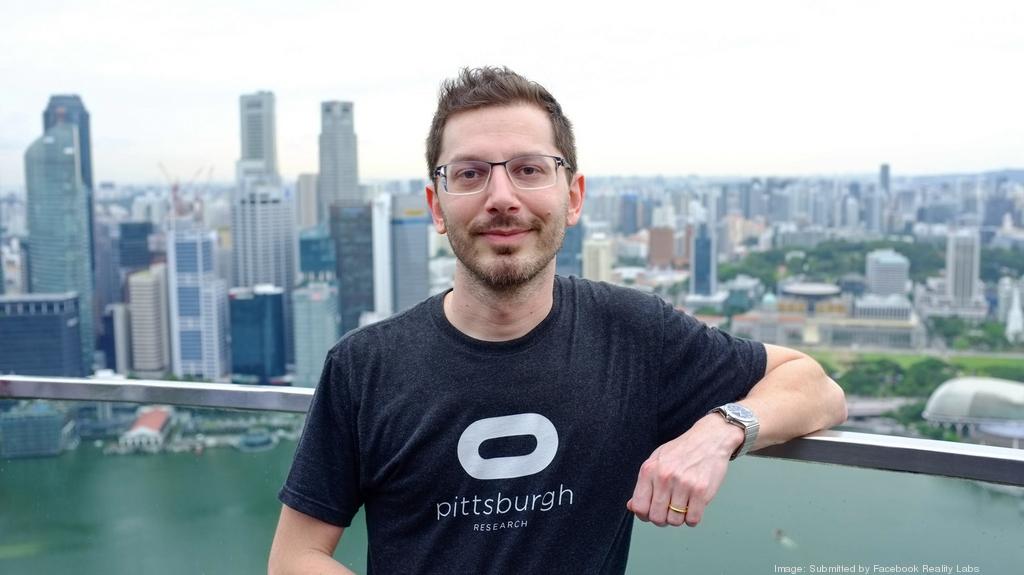
We had our first in-person producer roundtable this Wednesday and discussed scrum practices (link attached), problems we had in the past weeks, and potential ways to solve them. One of our problems was timeline planning, because although the producer could write out a beautiful plan for all 14 weeks, it might not be practical. What happens when clients don’t like our design? What happens to the rest of the plan when the previous thing is delayed? A potential solution I am practicing is only to write the general skeleton and try to follow the overall production phases while adjusting the sub tasks timeline. For example, the pre-production phase was set for 3 weeks, therefore, the game design document must be finalized by the end of the phase. Although a sub-task like “sending out surveys to see what users would like to put in an identity wheel” was delayed, it could be pushed into the next phase without hurting the overall schedule.
The updated schedule is as follows (screenshot attached):

Instructor Meeting (Feb.11)
More detailed suggestions were given to the merged game design. For example, in part 2 (refer to slides above), people counts could be difficult to realize while color composition is a much simpler way. Since generating a culture-related question database could also take a lot of time and is slightly off-topic, we could hold off to the Q&A section. We should think about what the facilitators could take away from this gameplay and then explain to students why they just played it. Why is learning about cultural humility important? For example, is the gameplay showing that blind spots in culture are problematic? The gameplay could favor a more diverse team while a non-diverse team could not achieve certain things. As the gameplay is not a standalone session, we need something to trigger more discussion for the roundtable afterwards.
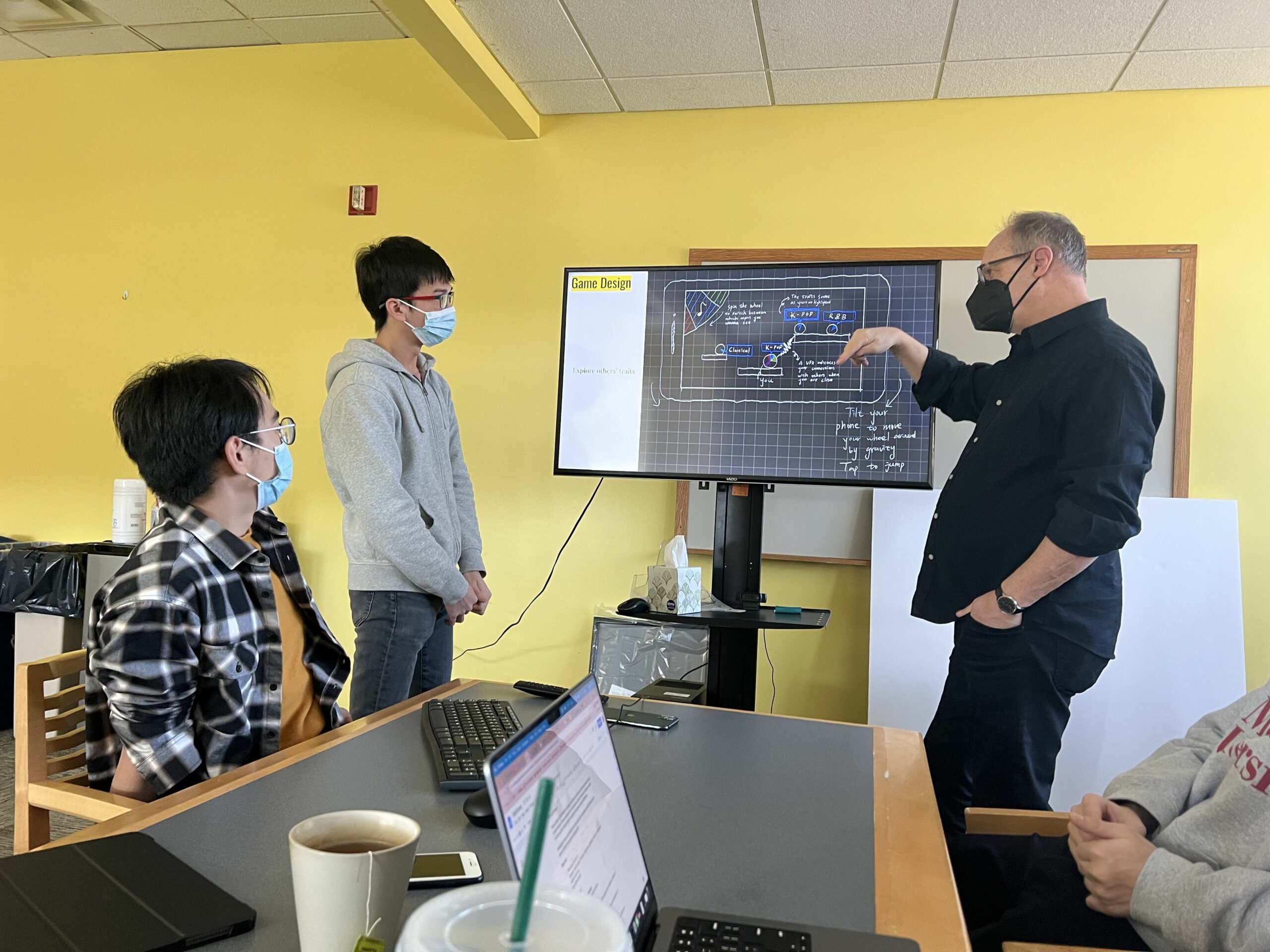
First Group Trip to Miller ICA (Feb.9)
From February 5-20, the CMU Design Senior Class of 2022 will exhibit works from their 4-year experience at CMU. Our instructor encouraged us to visit the Miller gallery on campus for culture-related work in Consciously Competent and we went together that afternoon!

Miller ICA Front Entrance 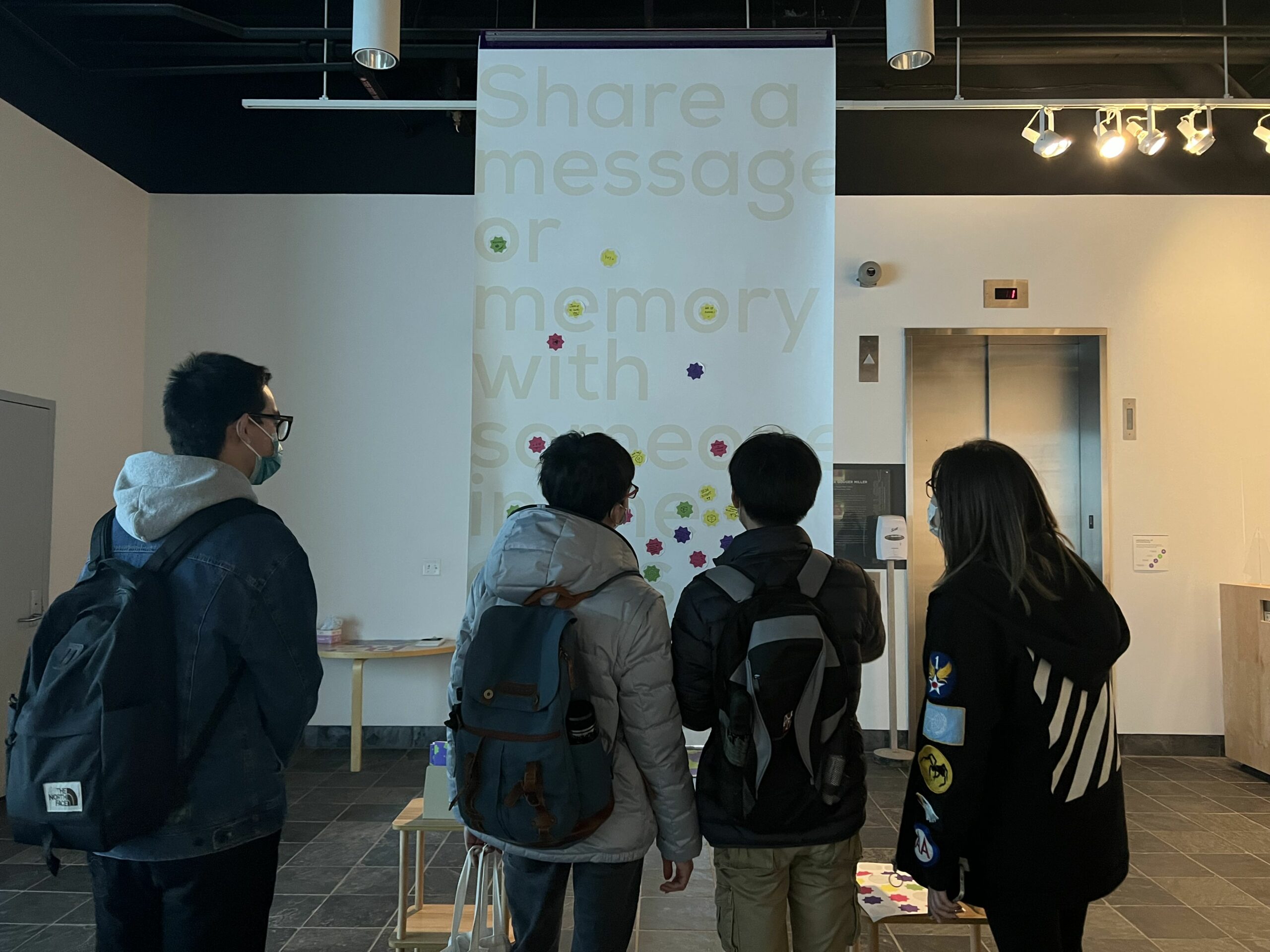
Consciously Competent – Message Board 
Consciously Competent – Message Board 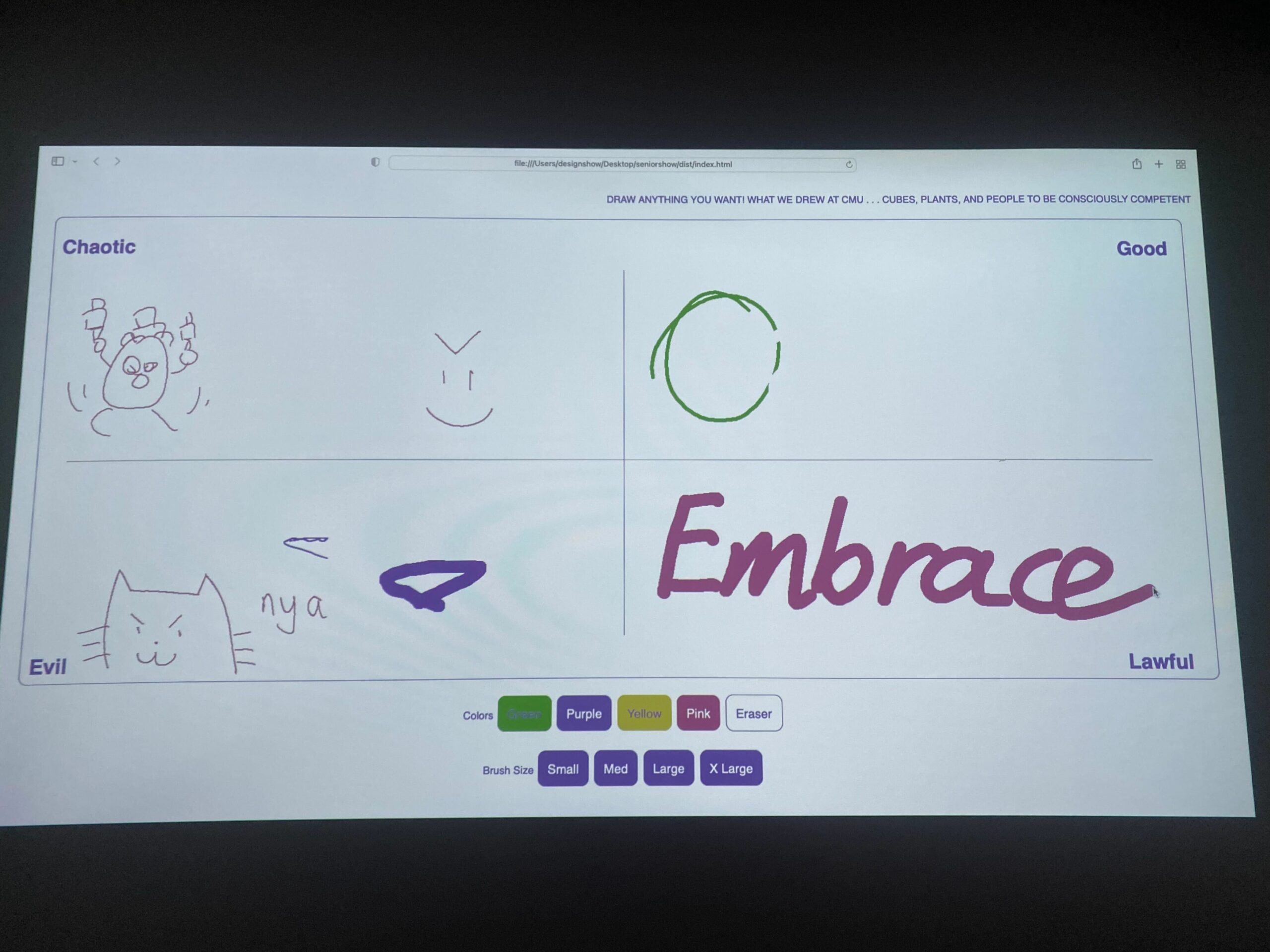
Consciously Competent – Interactive Screen 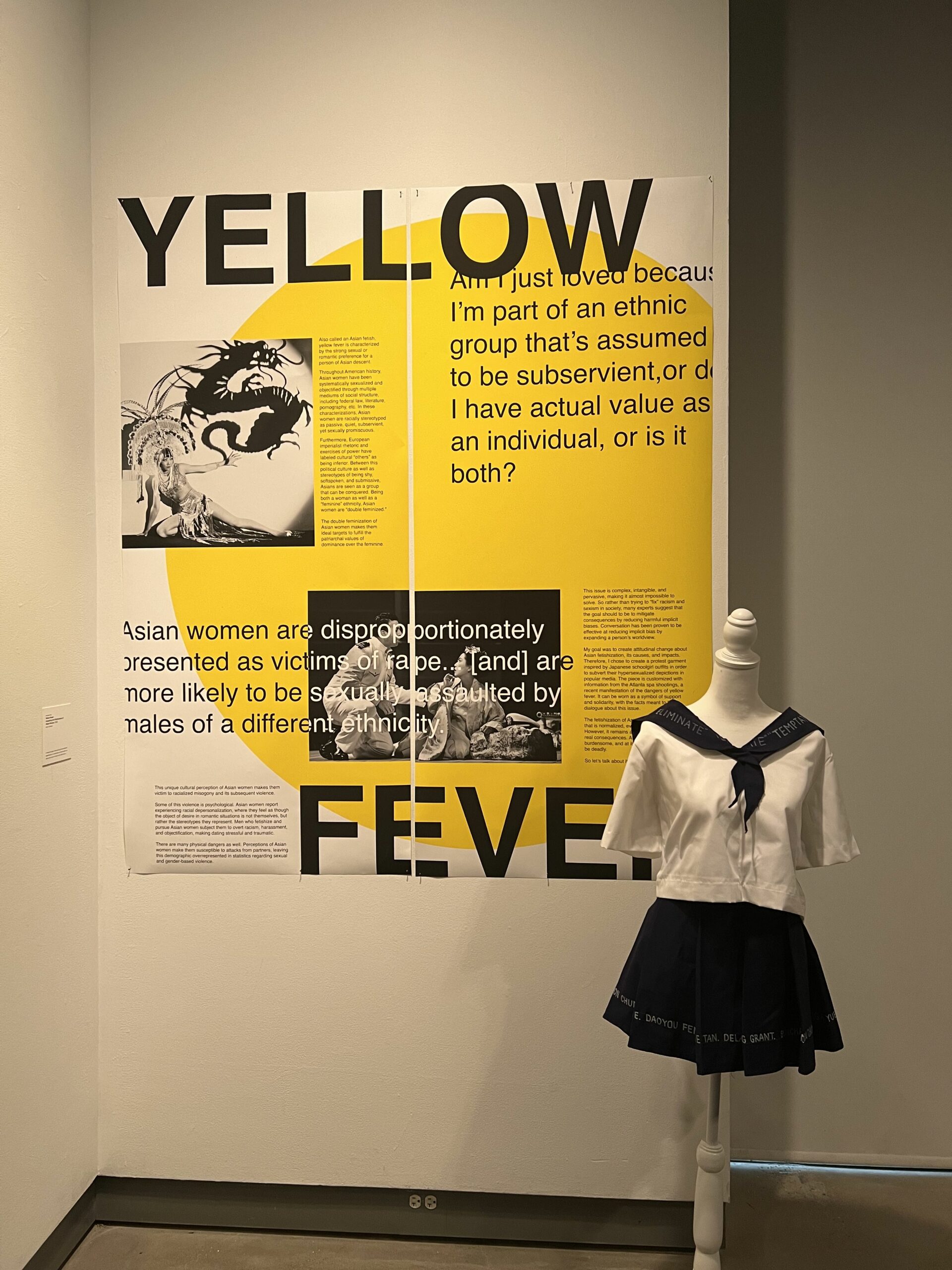
Consciously Competent – Yellow Fever 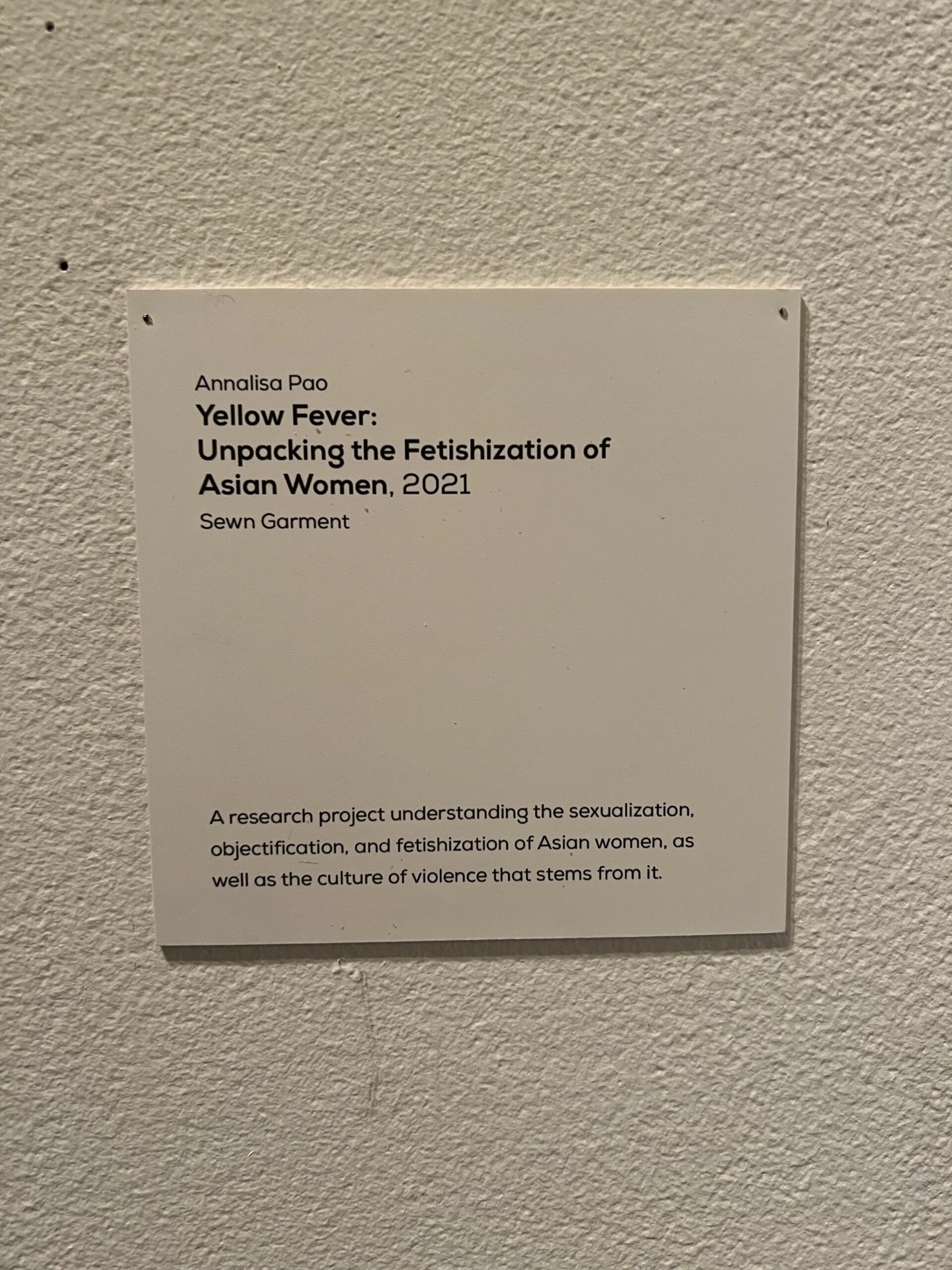
Consciously Competent – Yellow Fever
Playtest Planning
Besides the regular playtest sessions we would like to schedule after Alpha phase starts, ETC has a traditional playtest day in April so we had a discussion about the playtest session details which came out as below.
- Preferred group is high school juniors and seniors, and first-year undergrad. Flexible group would be any college student (second-year undergrad to phD). We hope to playtest with people from as many cultural backgrounds as possible, whether or not it’s reflected from their nationality, race, gender, religion, etc. Ideally, players do not know each other beforehand.
- Where: Depending on how many people we could recruit. Since we would like to test with a large audience at the same time, to mimic the scenario of an orientation session, we might need a bigger space, like RPIS which has a big screen in front of the audience.
- How long: 40-minute block preferred
- How Many: We will be testing as many people as we can get at the same time, because later we will be aiming for a 300-400 audience. Minimum number would be 10 people, and no max cap. We could have at most 3 tests in the morning and afternoon.
Project Management
Project room doors are “renovated” with information like our names, core hours and who is available in the room (picture attached).

The daily standup bots continued to serve its purpose and gather responses. However, the mood board has been a mix of feelings and in particular, we always had 1-2 sad faces daily. The moods were kept anonymous but the issue needed to be addressed. After posting the issue to the channel, I decided to add an AnonymityBot to create a safer space for whoever needed it, which immediately took effect (screenshots attached).

Addressed sad face issue in Slack 
Added AnonymityBot in Slack
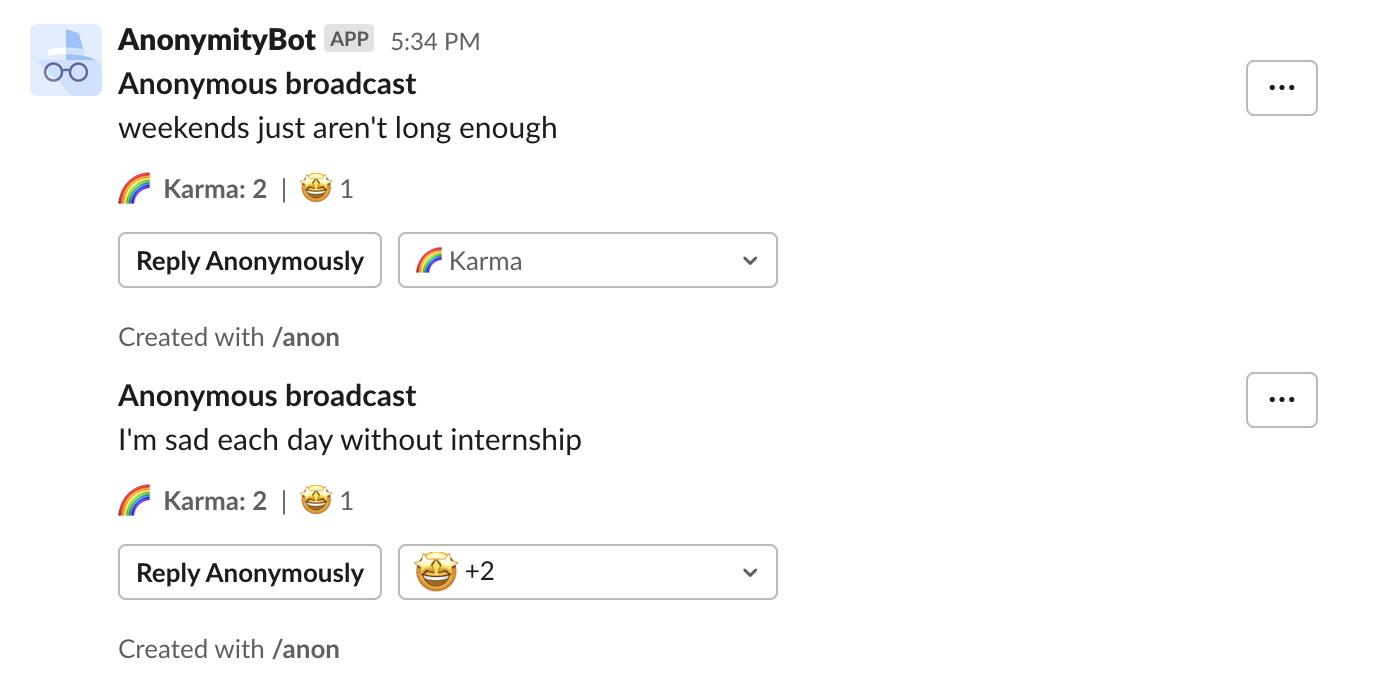
Anonymous Messages from Team in Slack 
Anonymous Messages from Team in Slack
Production Design
We have our poster finalized! Thanks Amber! (Iterations attached)

A new page for Resources was created for the website so that visitors could have a collection of visual and text materials about cultural humility and other related topics, when they are interested to learn more (screenshot attached).

Programming
Shicai has been trying out AirConsole and made a short demo where the answers were sent from player’s phones to the big screen (demo attached).
What we plan to do:
Shan will start to plan out the tasks for pre-alpha and alpha phases, while adjusting the current schedule to match our progress. Amber will continue to work on production design (half-sheet to be printed out) the submission deadline comes next week. A team photoshoot session will also be arranged. For design, Jeffrey and Chao will be getting more details specified in GDD based on reviews and feedback and eventually have a finalized version by the end of next week. Alexa will be refining the survey and sending it to our instructors and the client for review. For tools, we will be checking past AirConsole support and subscription with ETC’s IT staff and our client’s intention to use a paid service (around $25 annually). Shicai will be prototyping with AirConsole for 500 people and see if they can divide up into groups further to confirm its feasibility. On AirConsole’s website, it supports browsers, most iOS and Android systems while it’s capable of serving up to 3000 in a single session.
